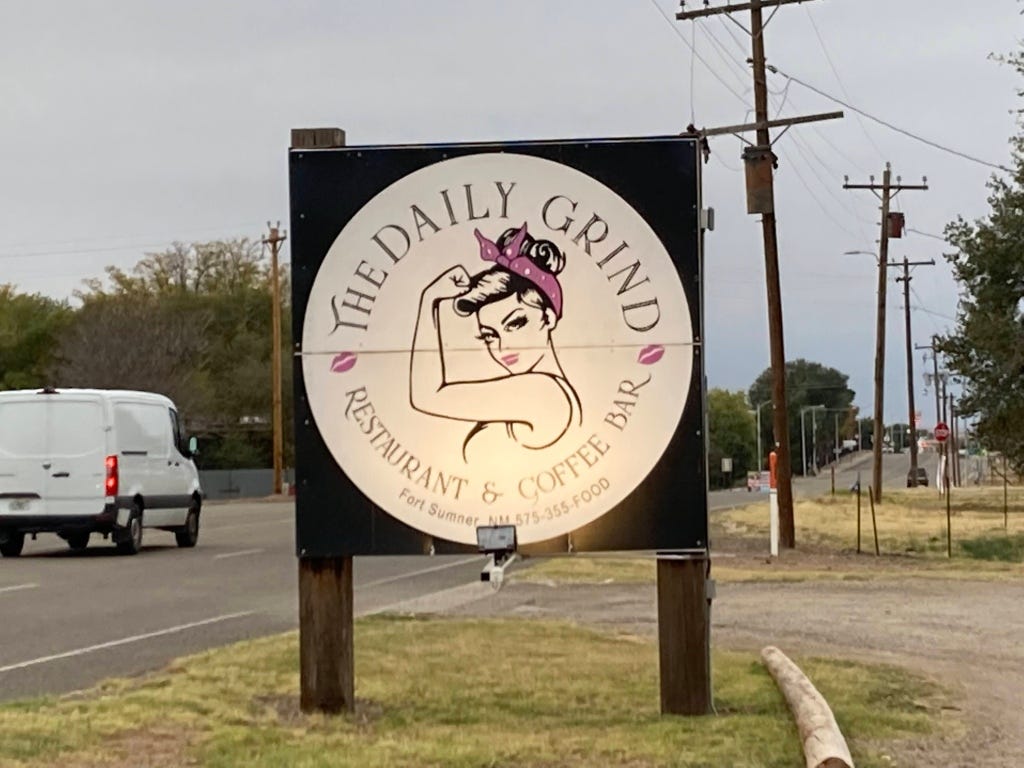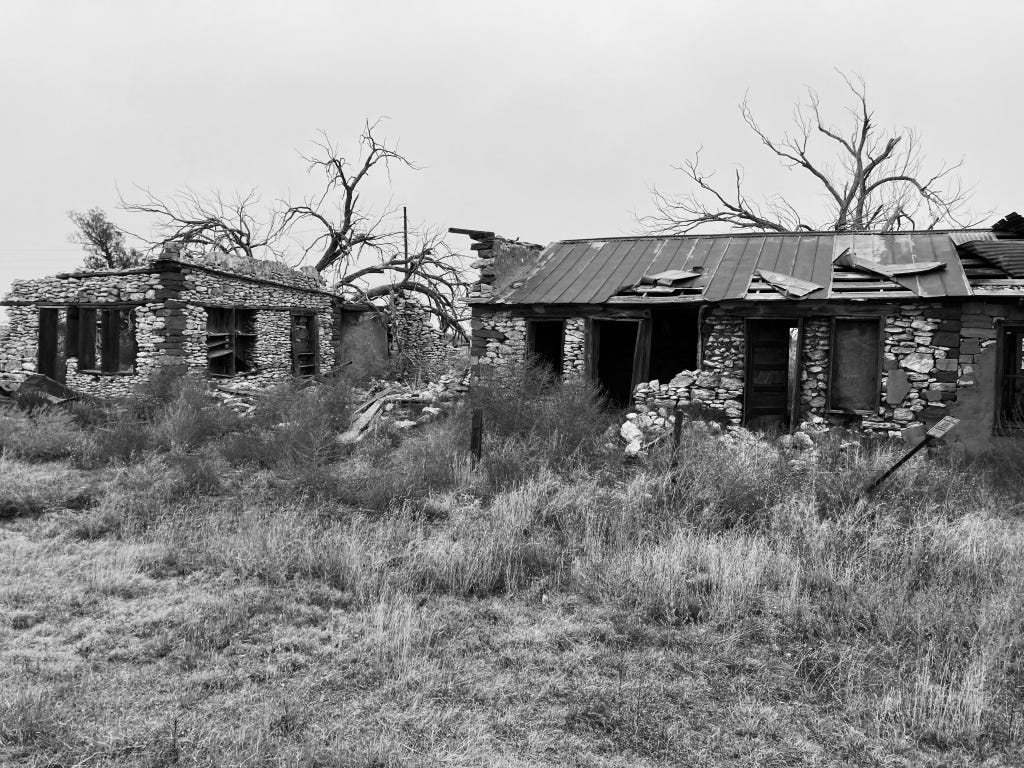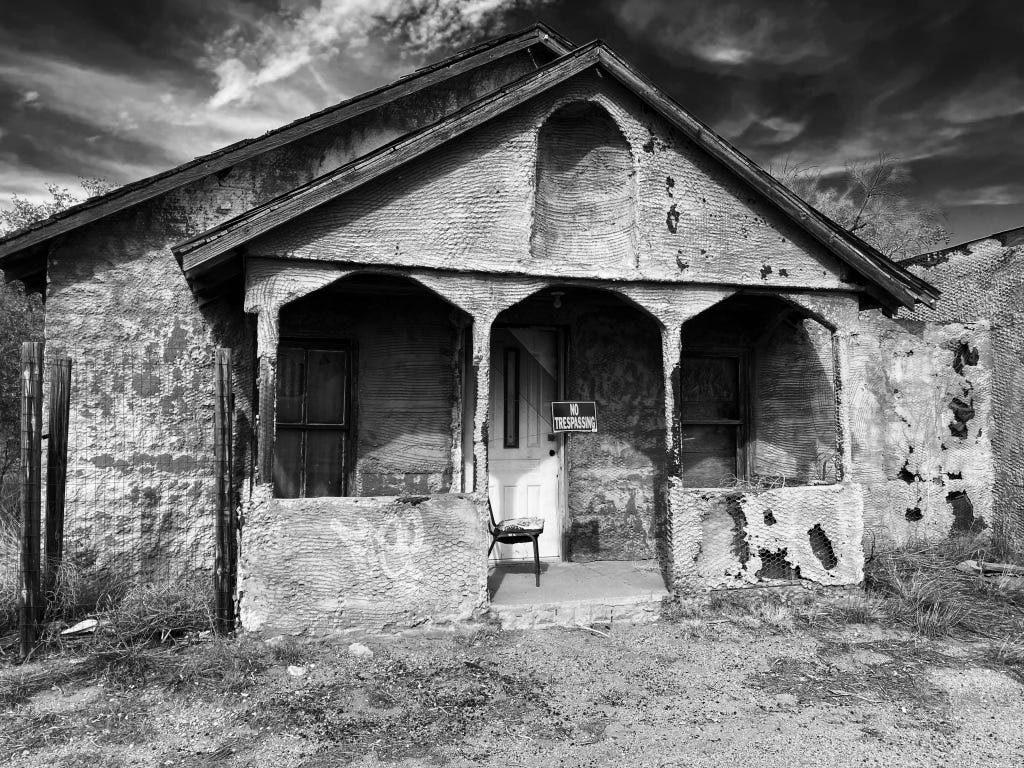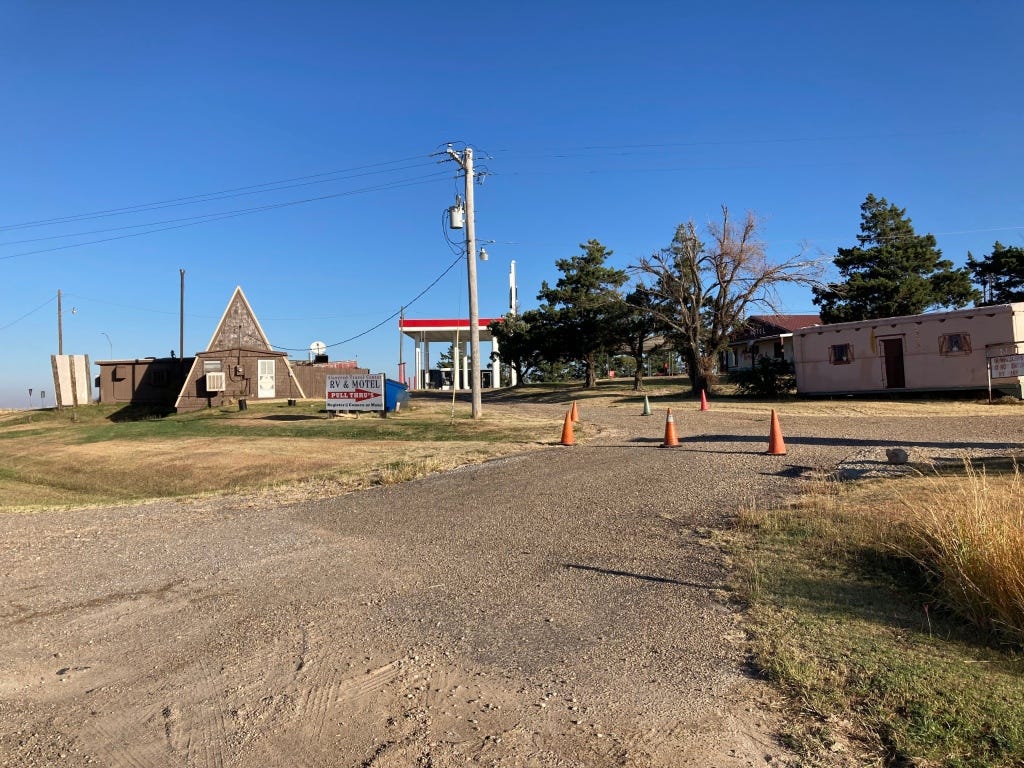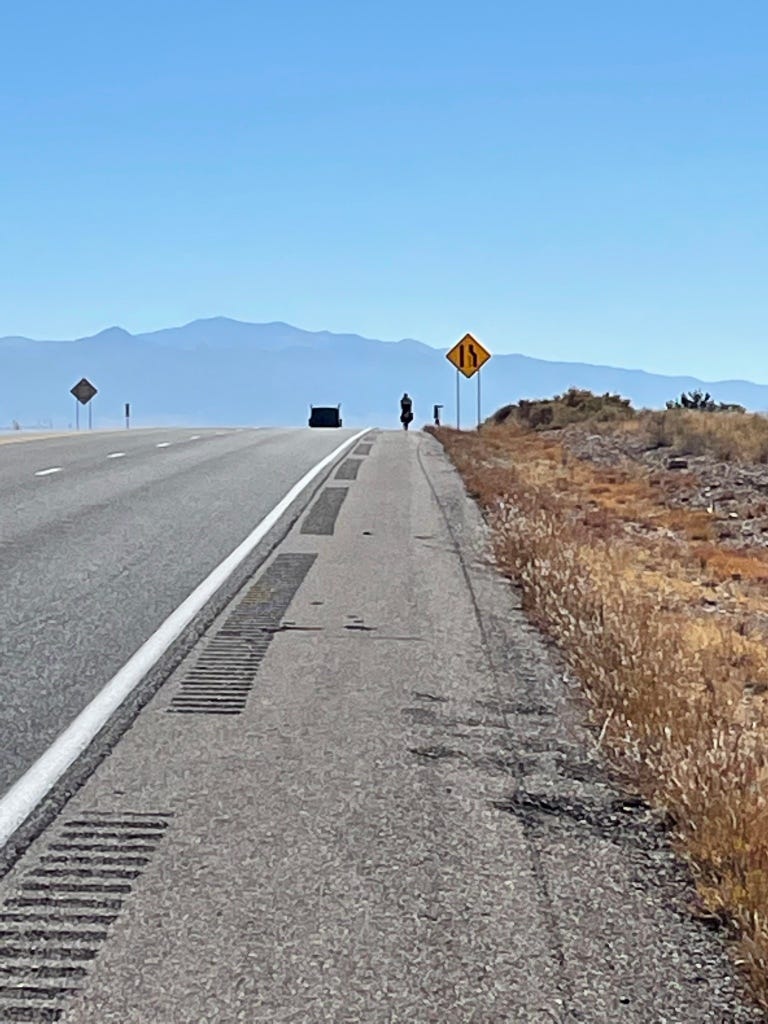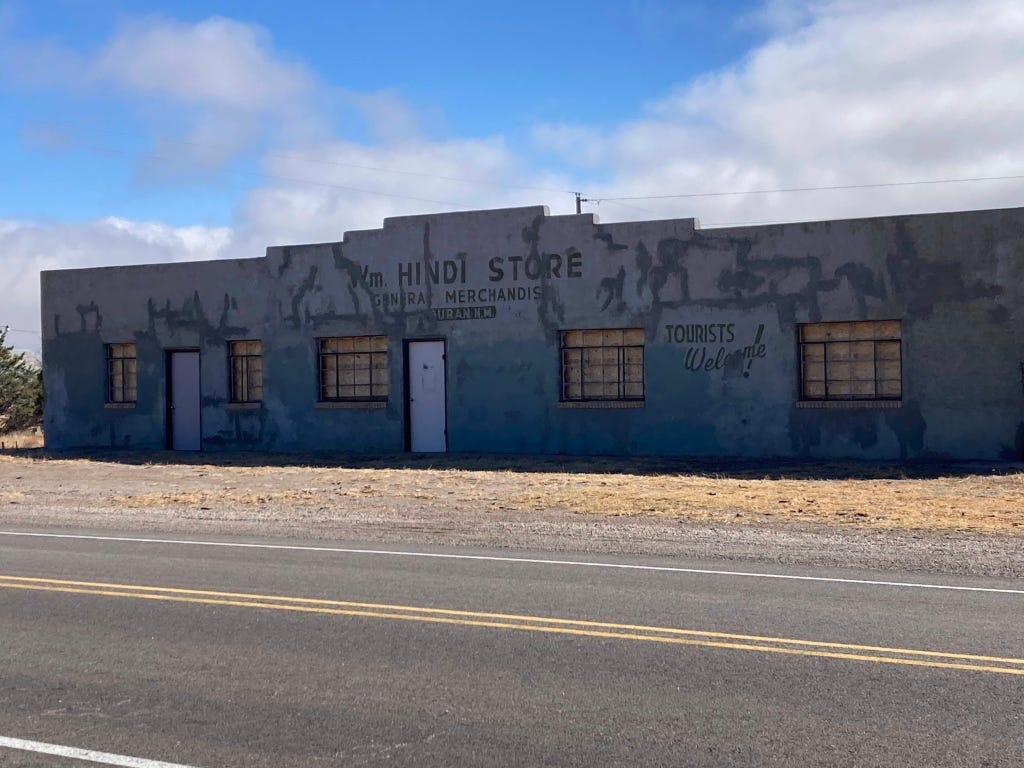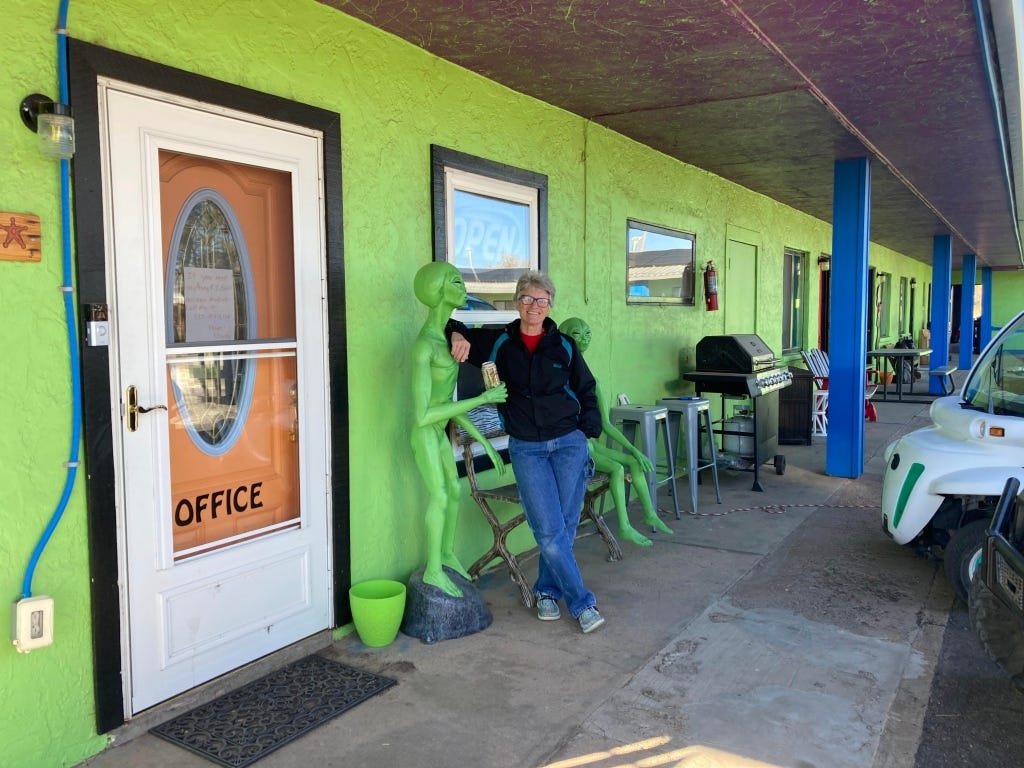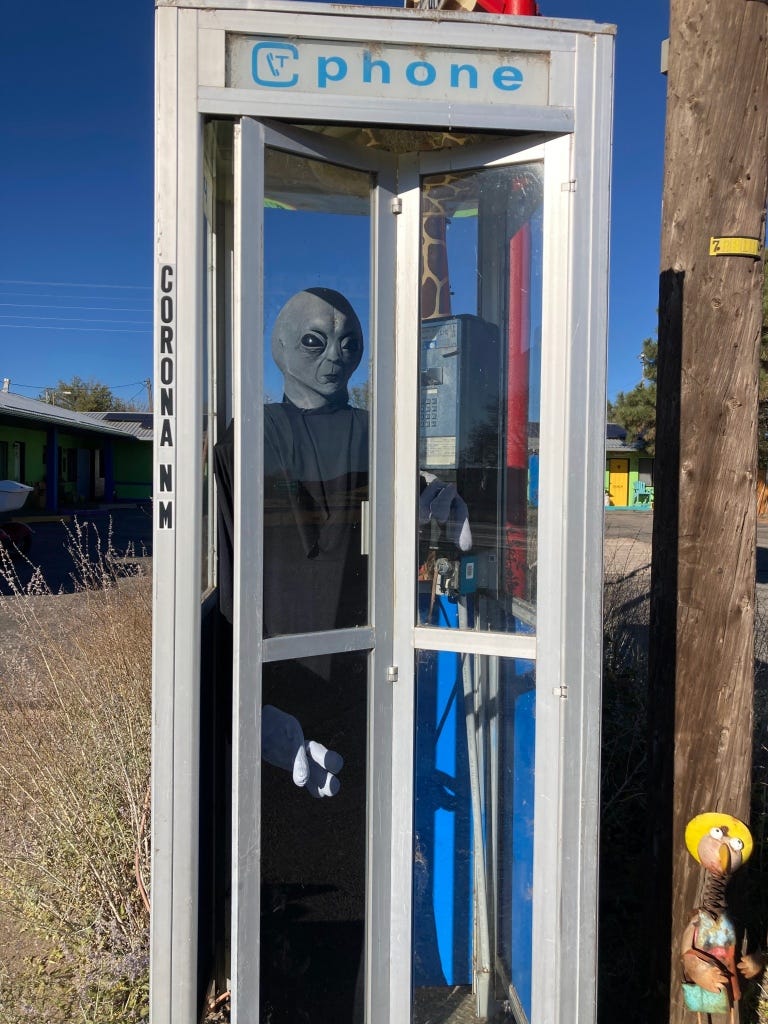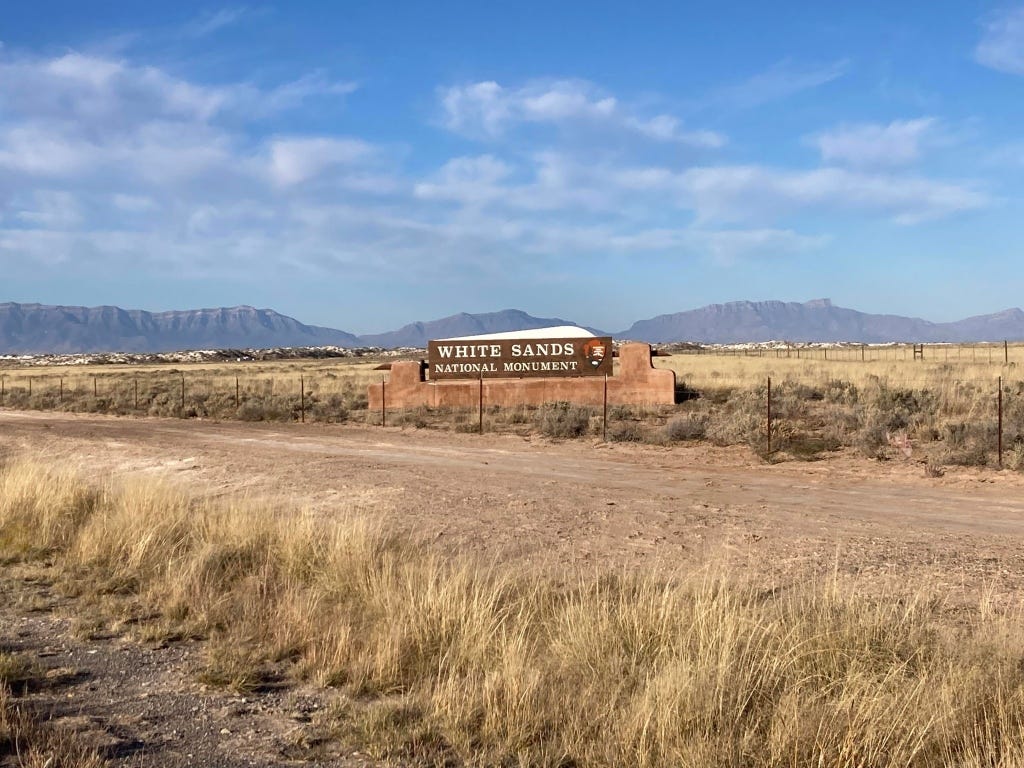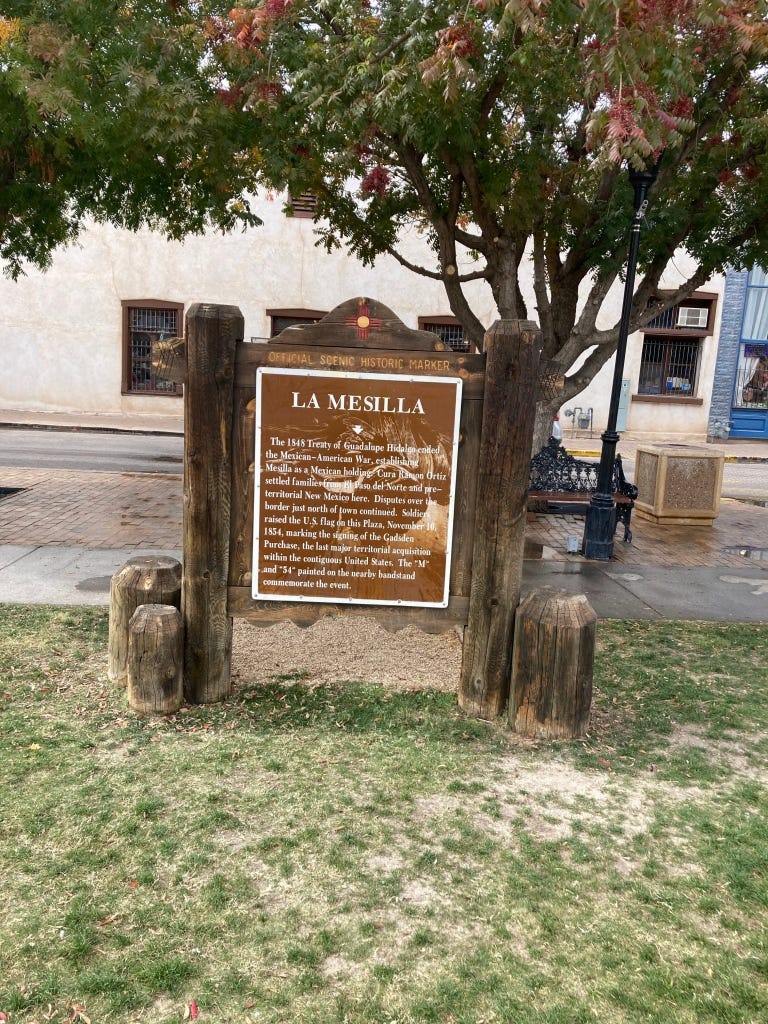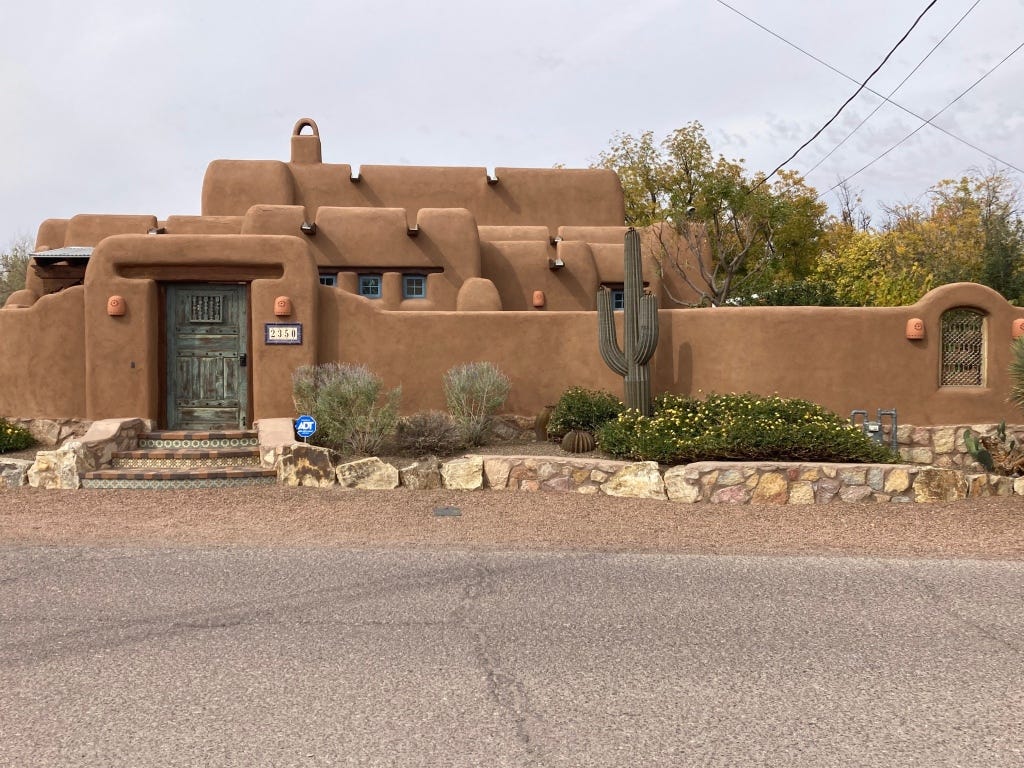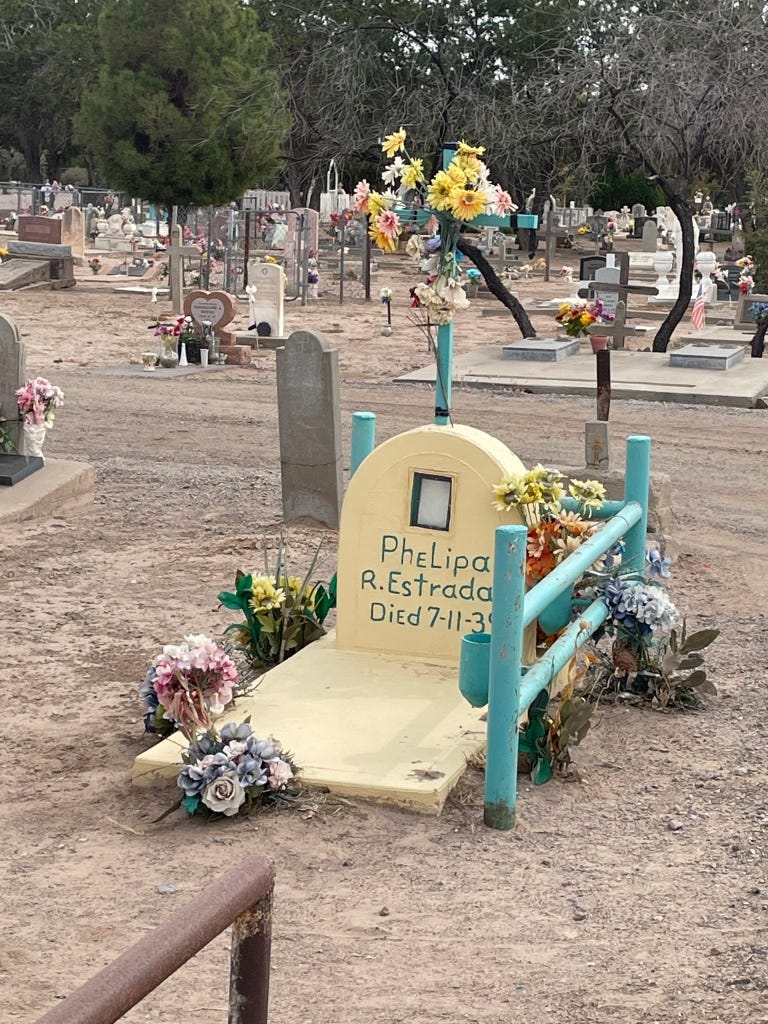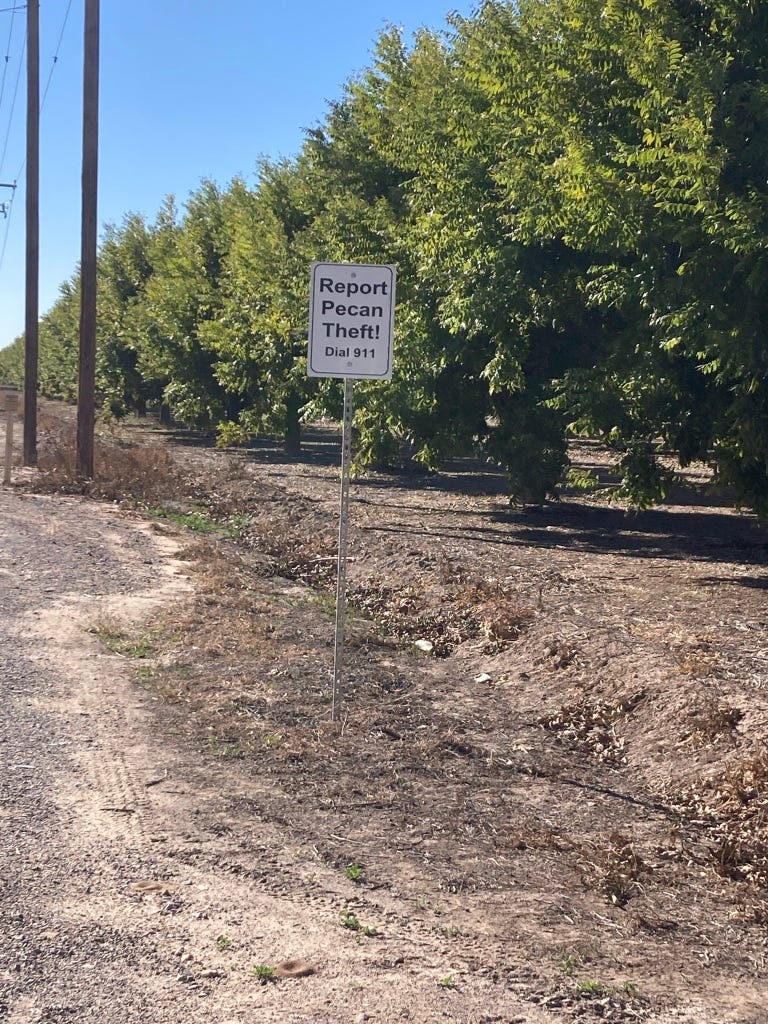Chapter 8 - Texas/New Mexico
Early-November 2021; Towards New Mexico
As Route 66 receded, we needed to once again create our own route. A high priority was heading south as quickly as possible to avoid the cold. To help with route planning I contacted a Warmshowers host in Las Cruces, Dan. He indicated that he was a former tour leader and knew the area well. Dan suggested a good route to Las Cruces that avoided both steep hills (mostly) and busy roads (mostly). It involved heading across central NM, in between two mountain ranges (one enclosing the Mescalero Reservation, the other defined by the White Sands Missile Range). We discovered through close observation of local news that NM’s weather is really divided by those ranges, with the warm sunnier part to the west. Gotta give those local weather reporters their due.
So, we left on the day we did (a Sunday morning) in part because an unusually strong wind was coming from the north, just for that day. Pam was also feeling much better. We hopped in front of the 20 mph tailwind and headed south. We ended up doing 100 miles almost exactly, to Clovis, NM. Probably our first, and only, century on this trip.
On our last cross-country trip in 1982 we also hit one century (125 miles due to a tailwind), also in New Mexico. Getting into NM from Texas put us in a good mood. Everything seemed more colorful, the mountains came into view, the people were very friendly, and the coffee was very good. And we weren’t even tripping on mushrooms (though the thought was discussed openly). We immediately set our clocks back to mountain time, and did so again about a week later with the termination of daylight savings time.We remain a little time-lagged, and continue to go to bed very early (by 8:30 or 9:00 we are zonked) ) and get up about 5:45. The sun rises around 6:20.
Our sojourn southwest to Las Cruces brought us through a series of small New Mexican towns with names like Fort Sumner, Vaughn, Corona, Carrizozo and Alamogordo. Each had a claim to some fame, at least at some point within the last 150 years. Fort Sumner has Billy the Kids’ grave, now hawked in a somewhat macabre fashion as a must-see (we didn’t) as well as an excellent coffee shop owned and run by local women; Vaughn has the railroad, and still has it to some degree. Railroad workers are pretty much the only game in town, and Vaughn is perhaps the most depressed little town we have encountered to date on our trip, which is saying something. It is literally crumbling.
We were able to find in Vaughn a small struggling motel with very sweet owners who emphasized that the place was 100% sober and smoke free. It wasn’t bad, although the hot water was sub-optimal.
Corona has the good fortune to find itself in some really beautiful mountains, and it was here that we finally felt that the topography, land features, flora and fauna had really become classically southwestern. This was a fun realization. This is not to say that Corona was prosperous; we again stayed at a small mom and pop place that offered us an RV to sleep in which was also actually pretty nice. The theme of the RV park and motel was, what else, aliens, the idea borrowed from nearby Roswell and famous Area 51. The typical guests, we were told, were wind power and utility workers who would stay weeks at a time building turbines and supporting infrastructure all over southeastern New Mexico. It reminded Pam of her Stantec days when she worked for weeks at a time in remote locations in New England.
Long shuttered “Hindi Store” in middle of nowhere on way to Corona, NM
Reaching Alamogordo was a bit of a milestone as we had just one more steep pass on our itinerary before Las Cruces. Alamogordo is perhaps best known as the general site of the first atomic bomb test in the world. Halloran Air Force Base (“Air Combat Starts Here”) is still a central part of the City and the military has the effect of driving up hotel prices in the area (as we discovered with dismay). White Sands Missile Range and the High Energy Laser Systems Test Facility both dot the landscape, along with the less lethal White Sands National Park, which we visited briefly. I guess there is a little something for everyone here. The landscape is quite striking and beautiful, with scrubby desert mountains meeting very white sand at their base. It is hard to imagine that an atomic bomb exploded over the white sands horizon that I was casually taking a picture of 75 years after the fact.
The pass to Las Cruces (pop. 102,000) was as advertised – steep, amazingly beautiful, pretty heavy traffic, and relatively short. As we crested, the view down into Las Cruces was notable for how different it was from the Alamogordo side – no white sand, no missiles and no atomic bombs. Seriously, though, the military presence, we discovered, is pretty much non-existent in Las Cruces.
We were excited about our ride to Las Cruces, both because we would be able to take a few days rest and because we had biked through Las Cruces on our last bike trip here 40 years ago. We hoped that our addled memories would be jogged in some manner and that at least some of Las Cruces would still be recognizable. We were also looking forward to an apparently wild and wonderful downhill ride to our Warmshowers host after cresting the pass from Alamogordo to Las Cruces.
Las Cruces
We arrived at Dan’s house after our long downhill ride tired and hot, but happy to be back to a place we visited many years ago. None of it, however, was recognizable. Dan lived in a small adobe house (most houses are adobe, or adobe-looking) with his two quite ugly (as freely admitted by Dan) bassett/beagle hounds, Fred and Ethel. He had recently retired from his job as a French Horn professor at the University of Memphis. After retiring to Las Cruces last year, he hung up his horn and has not played since, frustrated that he could not play the horn like he used to. Since Pam and I have never been able to play our instruments all that well, and will likely continue on as crude amateurs, we do not have Dan’s problem of high expectations. Dan has very admirably been a basset hound rescuer for many years, and continues as a foster parent to the creatures. He spends most of his time these days recovering from his immediate post-retirement heart attack (two weeks after he retired) (6 stents) and hosting bike tourists.
Las Cruces, if you have not been there, is well worth the visit, a definite top five city on our list of tops. It is a good size with a highly diverse population. Spanish and English are spoken almost interchangeably. Most of the houses are a pleasing sand color, often splashed with bright highlights. New Mexico State University is an obvious driver of the economy. We encountered some of the largest athletic/recreational complexes anywhere on this trip and, of course, the biking is very good, with mountains everywhere and bike paths in town well-marked. The city is “historic” and there is an impressive Old City, Mesilla, which is quite beautiful.

All in all, impressive. It had grown exponentially relative to the time we were last here, but it still has a small town feel. Like any small city, it no doubt has its problems, but we were not there long enough to dig into or experience those problems. We did see one other bike tourist while entering Las Cruces, but did not stop to chit chat. That makes two bikers since Tulsa. Dan, though, assured us that he had a pretty steady stream of cross-country bikers all the time. The newly created “Monumental Loop”, a 305 mile figure- eight off-road trail that extends both north and south of Las Cruces also attracts bikers from all over the country, and Dan has been hosting more of those folks as well. Here is a link to a good video about the Loop.
We stayed in Las Cruces for two nights, enough time to explore a good deal and take it all in. We wanted to continue heading south in order to stay ahead of the cold and to avoid the I-10 corridor to Tuscon. We biked that corridor in 1982 and although most of it can be ridden on frontage roads, at least some must be on I-10 itself. So, we biked south 30 miles alongside huge pecan orchards (needing extraordinary amounts of water) leading into Santa Theresa, NM, a very small suburb of El Paso. From there we would bike along the New Mexico – Mexico border to Arizona. That will be New Mexico Part 2.
Some folks ask how we are able to bike 50 – 75 miles almost every day without going stark-raving mad, especially as it relates to being alone with your thoughts all that time. Isn’t it boring or dull? First, our survival instincts are constantly being used and tested. Simply staying safe on the road takes up significant bandwidth. For all you lacrosse players out there, “head on a swivel” is also my mantra. Logistics and knowing where we are and where we are going also takes attention. We both do listen to podcasts and music while riding, and we both have small bluetooth speakers attached to our handlebars, and they work great.
At least some riding time is somewhat meditative and moment to moment. We are both conscious of this ongoing use-any-time informal practice and I think it ultimately helps to keep our minds sharp (as does daily endurance exercise!). Pam captured this feeling well the other day when she wrote the following passage:
“Sometimes when you are riding, there is simply nothing else to do. You look around at the landscape which seems to be unchanging and, out of sheer boredom, you have to consciously dig deep, recognize the moment (small town Missouri!) and make yourself become conscious of your good fortune and peer into the landscape for what makes it unique.”
Finally, we have yet to see a road runner (also known as a chaparral cock) but continue to look. I did see a large, brown, hairy tarantula cross in front of me while I was riding the other day, drawing my attention.



